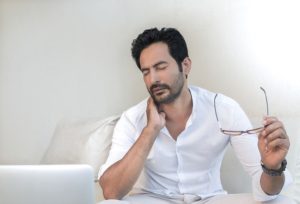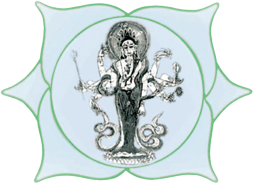- Soma Massage BellinghamThe Shanti Center
700 Dupont St.
Bellingham, WA
98225206-595-8055 - Testimonials
I had never had a Soma Session before and was completely blown away by Leah’s attention to detail. She was able to assess my body and find the areas of pain that had been bothering me for years. No massage therapist has ever given me the care that Leah gave to me. She was able to pinpoint each pain area and spent plenty of time working out the tension. I walked away feeling more in tune with my body and
... Read more »I felt released and renewed after my Body Intuitive session with Leah. She is quietly and confidently able to catalyze deep shifts quite gently as she guides you through aspects of the subconscious and beyond. Big thumbs up for that aspect of her work.
Carolyn Hallet, Board Certified Homeopath and Neurofeedback Practitioner, Bellingham WA
Leah brings many years of skilled experience working with people and a lifetime of intuitive development to this new layer of her craft working with the Body Intuitive System. I am a somatic practitioner specialized in early human development. I’ve been involved in studying and teaching in the healing arts for 20 years internationally. In my opinions Leah is a world class practitioner. Her kind and non judgmental approach creates a field of safety where deep healing and discovery can
... Read more »Theta Healing with Leah was a sweet and sacred experience. I received exactly the information and confirmation that I needed. I expect the messages to continue to seep even more deeply into my body and psyche with time. Leah’s intuition was spot-on as she named and offered healing to deep and tender places, including some surprisingly specific rituals to take with me. Kind, respectful, and ego-contained, Leah is a trustworthy companion for healing body–body and soul. – J.S., WA.
Two sessions of theta healing with Leah did so much for me. Theta healing felt like having a tailor mend the fabric of my life — mind, body, and soul. Theta healing gave me another perspective. How invaluable. I was so impressed that I started looking up more information on theta healing. Leah is a rare jewel among Theta healers. With this work, it is my impression that the message is just as important as the messenger- and I
... Read more »Your healing was the first focused energy work I have experienced in a long time. I am feeling great from the work. I haven’t been fully relaxed in a bit. I appreciate your attention/intention. The most powerful part was briefly falling asleep. Most of my life, I have had a severe sleep disorder. So falling asleep is a compliment to your work. Thank you for the very powerful treatment. – R.A., CA.
It was my first time for Theta healing therapy, in general, and with Leah, truly a gift! We connected in a calm but spiritually explosive emotional healing specifically driven. Respectfully and gently addressing the specific emotions causing contrast, allowing for a clean flow of cleansing to take place. A truly guided giving and receiving experience of deep healing emotionally, that I hope to explore more deeply in the future. – R.R., Bellingham WA.
I was struck by your care, your clarity, and boundaries. Nothing felt imposed upon by you, allowing me to feel safe and open. Everything felt like an invitation, making it easy for me to participate. The next day, I felt remarkably better, especially with the back injury. It felt like I hadn’t injured myself. The work was meaningful to me as a recipient. – W.C., OR.
I value your grounded presence and the way the space was held. You were logistically and spiritually dialed in. I appreciate your subtlety. The session was every bit as real as getting a tuning fork session in person. I feel good, shifted, and in a new place.
Z.H. WA
It was my first time for Theta healing therapy, in general and with Leah, truly a gift! We connected in a calm
but spiritually explosive emotional healing specifically driven. Respectfully and gently addressing the specific
emotions causing contrast, allowing for a clean flow of cleansing to take place. A truly guided giving and receiving experience of deep healing emotionally, that I hope to explore more deeply in the future.R.R., Bellingham WA.
Acupressure
4 Ways to Massage Away A Headache
In the United States, 45 million Americans suffer from chronic headaches. Headaches can be debilitating and career ending. Chronic headaches create added stress at work, at home and in everyday life. Massage can be a very important tool for relieving chronic headaches. It can be used proactively to prevent headaches and also retroactively to help relieve a headache that is already in full swing. Let’s look at some ways that massage can help with headaches. continue reading
All About Trigger Point Therapy
Ever had pain when you press on a specific area of your body?
It could just be a bruise, or it could be a trigger point. A trigger point is defined as a sensitive area in the muscle or connective tissue (fascia) that becomes painful when compressed. There are many ways to deal with them, but current fad in alternative medicine is trigger point therapy and it may surprise you. continue reading
The Importance of Acupressure
Acupressure is a form of healing that applies gentle pressure to specific points on the body. This healing therapy was developed over 3,000 years ago as an aspect of Traditional Chinese Medicine. The technique uses precise finger placement and pressure on the specific healing points to stimulate the body to heal itself.
According to Asian medical philosophy, acupressure helps activate the pressure points to improve blood flow, relieve tension and improve energy. Acupressure is an effective form of stimulation that helps relax muscles, especially when done regularly. Daily use of acupressure can not only improve ailments, but it can minimize the recurrence of the symptoms. continue reading
5 Pain Relief Trigger Points You Can Use at Your Desk
 The number of desk chairs advertised to support low-back health and reduce neck and shoulder pain should be an indication of the strain sitting for so many hours a day can put on your body. Sitting at a desk for eight hours a day places between 20 and 30 extra pounds of pressure on your neck and shoulders each day. Poor posture can also contribute to neck low-back pain and tightness in your hips. As our society shifts to predominately seated, desk jobs, it’s important to have strategies to support your physical wellbeing while you work. continue reading
The number of desk chairs advertised to support low-back health and reduce neck and shoulder pain should be an indication of the strain sitting for so many hours a day can put on your body. Sitting at a desk for eight hours a day places between 20 and 30 extra pounds of pressure on your neck and shoulders each day. Poor posture can also contribute to neck low-back pain and tightness in your hips. As our society shifts to predominately seated, desk jobs, it’s important to have strategies to support your physical wellbeing while you work. continue reading
